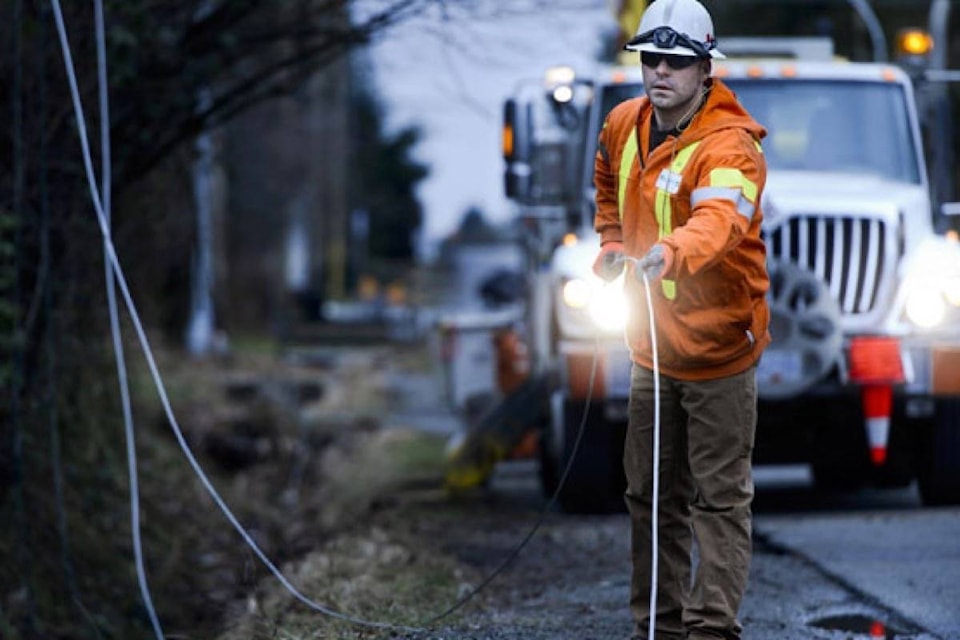A new BC Hydro report finds that the number of storm events BC Hydro has responded to has tripled over the past five years.
The report—titled “Storm warning: The impact B.C.’s wild weather is having on British Columbians and their power” (read it at http://bit.ly/2FpNI1K)—found that storm and extreme weather events are becoming more frequent and severe as a result of climate change, leading to more damage to BC Hydro’s electrical system and outages for customers. The number of customer outages during major storm events has increased by about 265 per cent, from 323,000 customers in 2013 to 1.18 million in 2017.
The impact of storms in B.C. has not gone unnoticed by British Columbians. A recent survey commissioned by BC Hydro found that more than 75 per cent of British Columbians agree that storms in the province are getting worse, and 20 per cent indicate they have experienced more outages in their neighbourhood in recent years.
In B.C., falling trees and branches are the primary cause of power outages. B.C. has three times more trees per kilometre of line than anywhere else in North America. The combination of trees and adverse weather account for nearly 60 per cent of all outages.
“Despite the challenges faced by crews during these severe weather events, our customers aren’t waiting longer to have their power restored,” says Chris O’Riley, BC Hydro’s President and Chief Operating Officer. “In fact, about 95 per cent of customers’ power is restored within 24 hours following an extreme event.”
To improve response times, BC Hydro remains focused on preparing for storm season year-round. BC Hydro is also using its smart meter network along with introducing new technology and processes, including:
· Enhanced prediction logic: Using an algorithm and the smart meter network, BC Hydro’s system can confirm an outage and mark its location on a map, which a dispatcher can then analyze and dispatch a crew to investigate and make necessary repairs.
· New mobile dispatch tools: These tools communicate via satellite and help information from the field get to its operations centre faster and more often, providing more timely updates for customers.
· Improved meteorology models: This information provides greater insight into where and when a storm might hit, so that BC Hydro can ensure crews are ready to respond quickly.
editorial@accjournal.ca
Like us on Facebook and follow us on Twitter
BC Hydro recommends that British Columbians prepare for weather-related power outages by having a well-stocked emergency kit on-hand that includes a flashlight, extra batteries, a first aid kit, non-perishable food, and water.
BC Hydro is also reminding the public that if they come across a downed or damaged power line, they should assume the line is live, stay back at least 10 metres (the length of a city bus), and call 9-1-1 to report.
For more information on keeping you and your family safe during storm season, visit www.bchydro.com/besafe.
